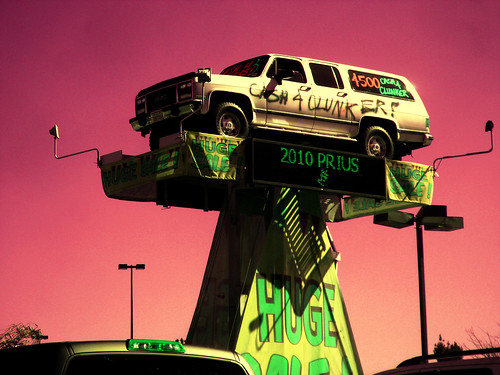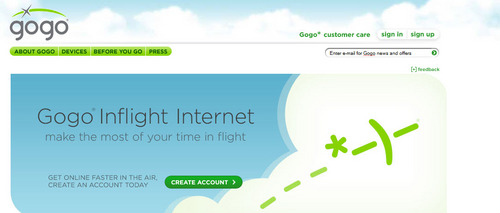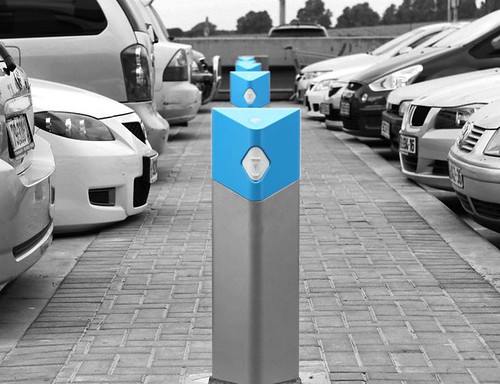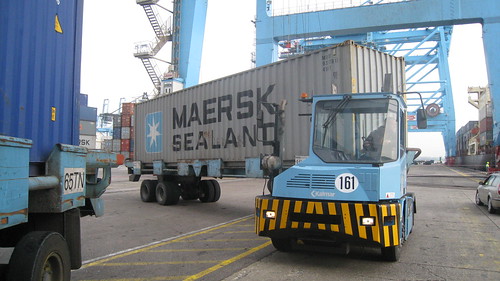Hurry Up! Going Out of Business Sale – Government Gets Ready to Pull the Plug on Cash for Clunkers; Program slated to go offline @ 8PM on August 24, 2009
(Source: Washington Post, New York Times, Bloomberg, The Detroit News, Autoblog)
The federal government’s Cash for Clunkers program began with a bang on July 24th and, despite the original plan having it last until Labor Day, will officially end next Monday night (August 24th) at 8PM. The end date was announced today by U.S. Transportation Secretary Ray LaHood and takes into account what he calls conservative sales estimates that have the pot running dry sometime over the weekend.
“This program has been a lifeline to the automobile industry, jump-starting a major sector of the economy and putting people back to work,” LaHood said in the statement.
As of today, C4C has recorded 457,476 sales worth $1.91 billion in rebates. The feds estimate about $400 million worth of rebates have yet to be submitted and are reserving another $100 million for administrative costs. That leaves $600 million left for what should be a very busy weekend on dealer lots.
After just a week, the program, which began July 24 and was expected to last until Nov. 1, ran out of the $1 billion originally appropriated by Congress. An additional $2 billion was approved two weeks ago, and it was supposed to last until Labor Day. Now that’s almost gone, too.
With the end in sight, many dealers are preparing for a flurry of last-minute customers over the weekend, and some are calling and e-mailing customers who were on the fence, perhaps threatening a surfeit of business.
“It’s not clear at all if there’s enough of the $3 billion to last through the weekend,” said John McEleney, chairman of the National Automobile Dealers Association. “My concern is if we go past the $3 billion between now and Monday.” He said, however, that he had been assured that the government has done calculations to make sure there is enough money left to get through the weekend.
In the days leading up to Thursday’s announcement, dealers and dealer groups said that uncertainties about the program’s ultimate conclusion were creating financial hardships and confusion. Among the organizations pressing for a resolution to the program was the National Automobile Dealers Association (NADA), which warned its members that “dealers who accept additional ‘clunker’ deals face a growing risk that they may not be reimbursed.”
Senate Majority Leader Harry Reid, a Nevada Democrat, asked LaHood in a letter today to speed up payments, saying “dealers have been forced to effectively finance the CARS vouchers for buyers until the dealers are reimbursed by the federal government, placing a strain on dealers’ balance sheets that, if prolonged, could eventually offset some of the benefits of the program.”
More than 1,000 people are processing the applications, LaHood said yesterday. That compares with fewer than 200 when the program began. The agency is training more of its staff and is using Citigroup Inc. contractors to handle the paperwork.
Also late today, Chrysler Group LLC joined General Motors Co. in announcing they will advance funds to dealers who are awaiting payment from the government for clunkers deals. The administration disclosed that it has paid just $145 million of the $1.9 billion in vouchers submitted — or less than 10 percent of the funds requested.
LaHood has been holding two or three meetings daily on the progress of the program in an effort to ensure an orderly shutdown.
The Alliance of Automobile Manufacturers, the trade association that represents General Motors Co., Chrysler Group LLC, Ford Motor Co., Toyota Motor Corp. and seven other automakers, praised the government’s handling of the program.
Click here to read the entire article.












